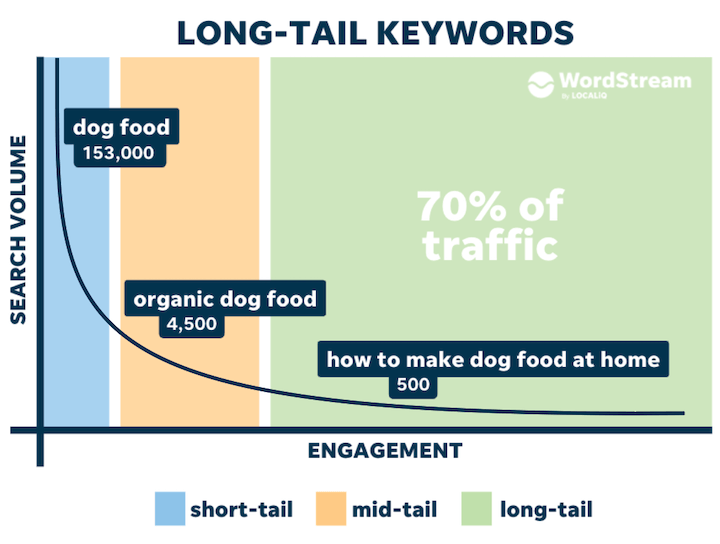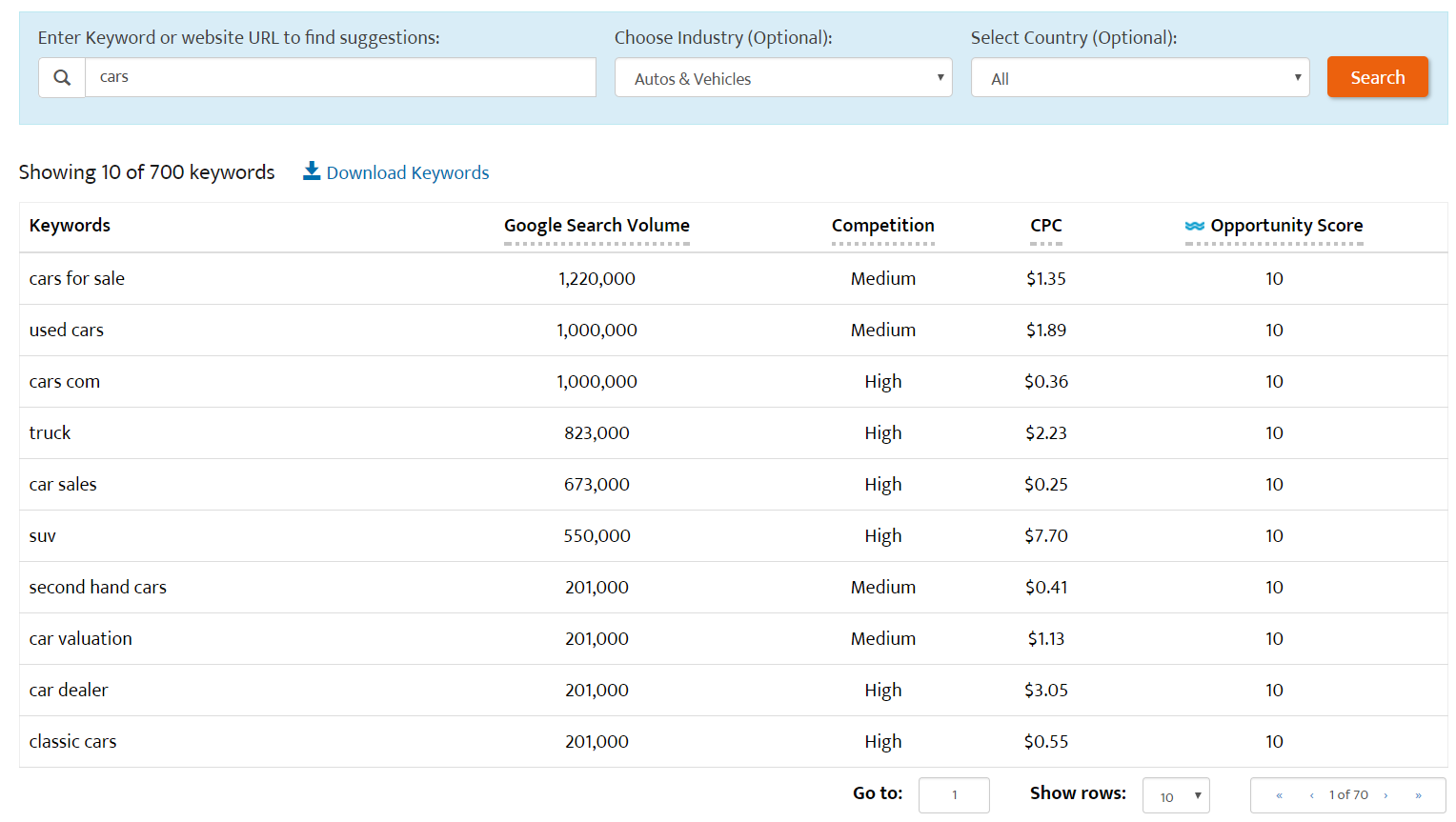Long-Tail Keywords: A Better Way to Connect with Customers
What are long-tail keywords and how do they work in search marketing? You’re about to find out!
What Are Long-Tail Keywords, Exactly?
Long-tail keywords are longer and more specific keyword phrases that visitors are more likely to use when they’re closer to a point-of-purchase or when they’re using voice search. Most long-tail keywords have lower search volume than short or “head” keywords. They’re a little bit counter-intuitive, at first, but they can be hugely valuable if you know how to use them.

Image inspired by Mangools
How Do Long-Tail Keywords Work?
Take this example: if you’re a company that sells classic furniture, the chances are that your pages are never going to appear near the top of an organic search for “furniture” because there’s too much competition (this is particularly true if you’re a smaller company or a startup). But if you specialize in, say, contemporary art-deco furniture, then keywords like “contemporary Art Deco-influenced semi-circle lounge” are going to reliably find those consumers looking for exactly that product.
Find your best long-tail keywords with our Free Keyword Tool.
Managing long-tail keywords is simply a matter of establishing better lines of communication between your business and the customers who are already out there, actively shopping for what you provide.
Think about it: if you google the word “sofa” (a very broad keyword sometimes referred to as a “head term”) what are the chances you’re going to end up clicking through to a sale? But if you google “elm wood veneer day-bed” you know exactly what you’re looking for and you’re probably prepared to pay for it then and there.
Obviously, you’re going to draw less traffic with a long-tail keyword than you would with a more common one, but the traffic you do draw will be better: more focused, more committed, and more desirous of your services.
The 80/20 rule in long-tail keywords
The phrase “long tail” is a visual metaphor for the shape of a distribution graph. Say we were to create a graph of web-wide keyword popularity, a few words and phrases (Facebook, sex, Justin Bieber) would rack up an enormous number of searches.
But here’s the surprising part: those keyword search terms, the “head” of the dragon, in reality account for a surprisingly small percentage of all searches, about ten to fifteen percent, depending on how you measure. Another fifteen to twenty percent of searches come from mid-length keywords, meaning that roughly seventy percent of page views are the direct result of – that’s right – long-tailed keywords. It’s a Chinese dragon: the tail goes on and on and on.
Finding Qualified Searchers with Long-Tail Keywords
With shorter keywords, competition for rankings can be fierce, but visits can be scattershot and ROI can be low. With smart implementation of long-tail keywords, you may pull in less traffic, going purely by numbers, but the return on your investment will be proportionally much higher: you’ll be attracting exactly the audience you’re looking for, and that audience will be far closer to point-of-purchase than that of your less-savvy competitors.
Less Competition = Lower Costs
Long-tail keywords are valuable for businesses who want their content to rank in organic Google searches, but they’re potentially even more valuable for advertisers running paid search marketing campaigns.
That’s because when you bid on long-tailed keywords, the cost per click is inevitably lower, since there’s less competition.

By targeting longer, more specific long-tail keywords in your AdWords campaigns, you can get higher ad rankings on relevant searches without having to pay a premium for every click.
The trick is to find a reliable, renewable source of long-tail keywords that are right for you and for your niche. Surprisingly, most keyword suggestion tools neglect this rich category, focusing only on the head, and ignoring the rest of the dragon.
So what are your options?
How to Find Long-Tail Keywords
It’s easy to find long-tail keywords with WordStream’s free keyword research tool. Just enter the word you want to research:

The tool returns the top 10 most popular keywords. Just enter your email to receive the full list of long-tail keyword phrases, completely free.
Using long-tail keyword variations in your marketing campaigns is a win-win: better search rankings, more qualified search traffic, and lower costs per click.
